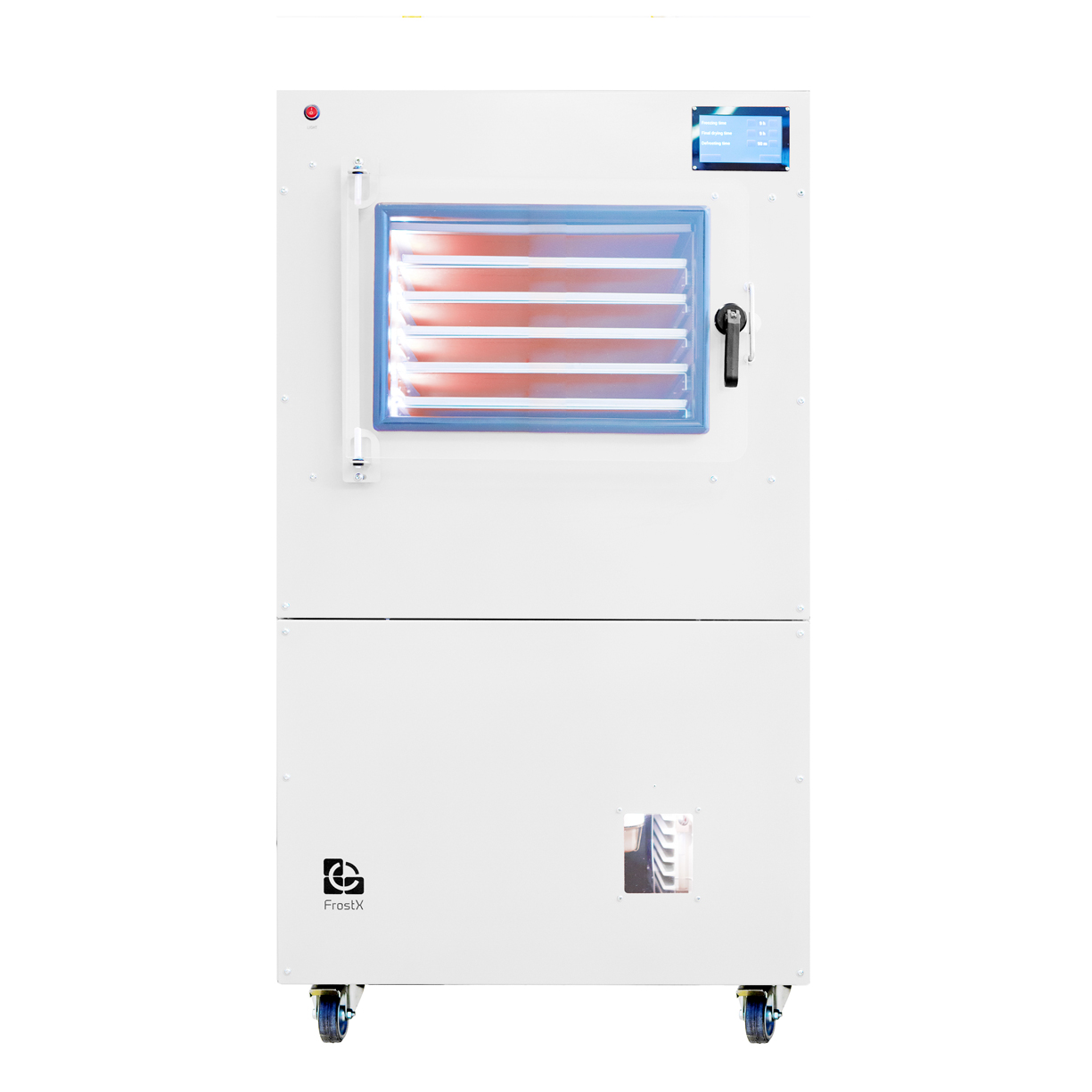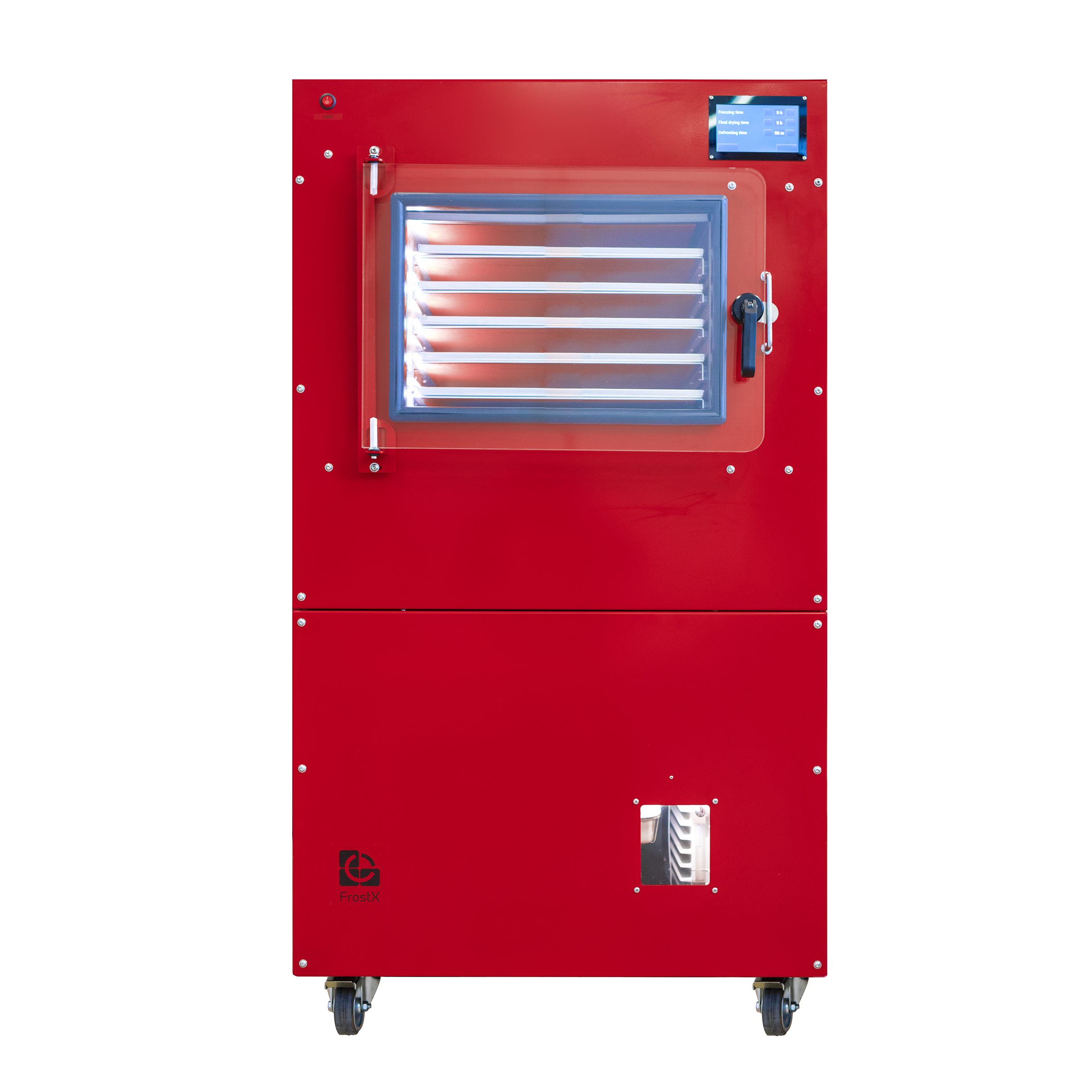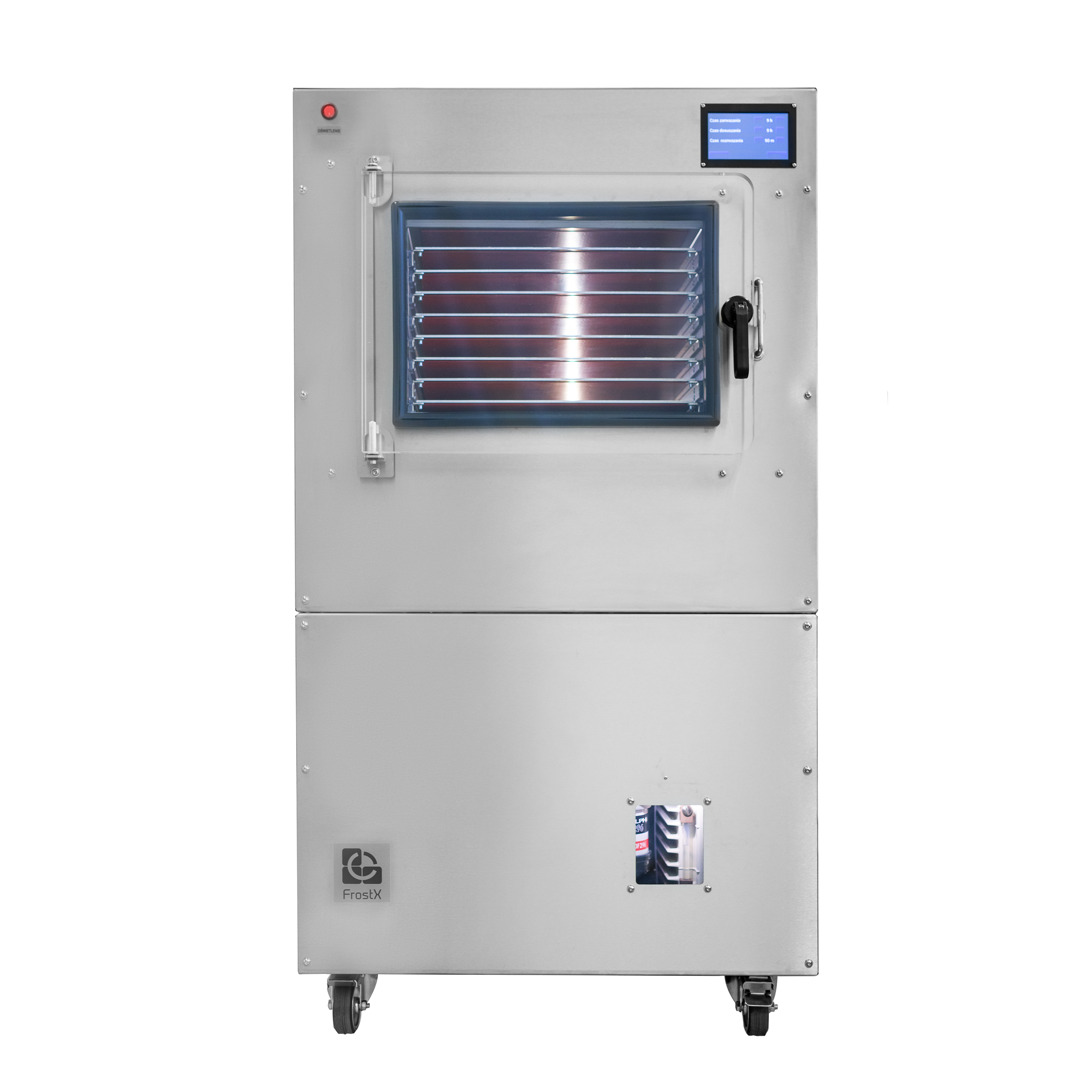For thousands of years people faced the problem of hunger. Even if our ancestors managed to get more food, there was a new problem – how to store it for as long as possible. One of the most primitive but nevertheless effective ways was to bury food under the ground, where temperatures are usually lower than on the surface. Today we can say that this problem – of storing food – has been largely solved! What is more, mankind has begun to look for newer and newer solutions thanks to which food will not only be fit for consumption for a longer period of time, but at the same time – even after a long period of waiting for consumption – it will be as close to its original form as possible.
Freeze-drying is undoubtedly one of the best methods developed so far!
What is freeze drying?
Freeze-drying is a multi-step process. In the simplest terms it is a process of removing water from a frozen product, through sublimation of ice, i.e. transformation of ice into water vapor, instead of its liquid state. It is possible by freezing the product inside the chamber of freeze-dryer with simultaneous lowering of pressure in the chamber.
The product obtained in this way is characterized by high quality and, in case of food, long shelf life.
How to make freeze-dried food?
In practice, only four movements need to be made. First you place your product on the product trays, then slide them into the machine, close the door and press “start”. Then the magic begins!
At first the temperature drops to around -40°C. This allows the raw material to retain its chemical properties and shape. Shrinkage during freeze drying is minimal, e.g. in case of fruits only 5-15% (in comparison with convection drying up to 80%).
Once this temperature is reached, air is extracted from the chamber until the pressure reaches a level comparable to the vacuum of space. In turn, the product trays themselves are heated to a temperature of about 40°C.
Under these conditions, ice sublimation takes place, i.e. the previously mentioned evaporation of ice without the liquid state. This way we get rid of most of the water from the raw material.
The last stage is “final-drying”, which aims to evaporate the remaining ice, so that the moisture level in the finished product is between 1 and 4%.
The length of the freeze-drying process depends on several factors, for example the fineness of the raw material, the water content, whether the raw material has a skin (e.g. in the case of fruits), etc.
However, we can assume that for most products the freeze-drying time is 19 +/- 6h.
This is how lyophilization looks like “from the inside”.
In case of freeze-dried food the result is a light product, which retains its shape, smell, nutritional value and color, but at the same time gains an appetizing crunchiness!
Lyophilization – examples with a bit of history
Already in ancient Peru, the Incas used a form of food preservation similar to freeze-drying as we know it today. They would leave potato tubers high in the mountains, where they would freeze overnight. During the day, heated by the morning sun, they gave up water, and the whole process was aided by low mountain pressure. Sound familiar?
During World War II, the US Army freeze-dried blood plasma to make it easier to transport to the front lines.
For many of us, freeze-dried food may be associated mainly with food for astronauts
Quite right! The beginnings of space flight were not easy. In addition to the problems associated with the flight, scientists wondered how to provide astronauts in orbit with complete meals. Initially, they relied on tubes of food. Then came the turn to dried food cubes, but both of these options were abandoned because their taste left much to be desired, but worse – the latter crumbled, and this was dangerous for the equipment as well as the astronauts themselves. Researchers looking for new options decided to use freeze-dried food. It turned out to be a bull’s eye! In this way, food was put into orbit, which was light, nutritious, cheap to produce, but above all safe. Just as quickly it gained recognition among the “spacemen” themselves, and to this day lyophilizates are an important part of their diet.
After that came the time for other industries and today freeze-dried products are successfully used in the pharmaceutical industry, food industry, for the production of vaccines, cosmetics, in transplantology, archaeology, etc.
Lyophilization at home?
Until now, lyophilization was only within the reach of large corporations, armies and other wealthy institutions – we are talking about industrial lyophilizers. Fortunately this trend is changing and thanks to FrostX compact freeze-dryers, this technology is now available also to small and medium entrepreneurs, restaurateurs, fruit producers, catering companies, etc.
Due to the prices of freeze dryers it will take a long time before they become commonplace in our homes. The good news is that consumers are more and more attentive to what they eat, they analyze the ingredients in search for the healthiest solutions, and therefore more and more often use freeze-dried food.
What can be freeze-dried?
We can freeze fruits, vegetables, herbs, ready meals (including soups), cheese, meat… In general, anything that can be frozen, can also be freeze-dried.
In archaeology, for example, it works well for safe and non-invasive drying of historical artifacts such as books, papyrus, etc.
Lyophilized products are also very popular in the production of cosmetics, confectionery creams and even honey, due to their low water content and resistance to spoilage.
What are the advantages of lyophilization?
Freeze-drying is a method of food preservation in which the only protective factor is the evaporation of ice from the product. This inconspicuous procedure carries with it a great many positives. One of the biggest is that sublimated food – as we mentioned earlier – has a very One of the biggest positives is that sublimated food – as we mentioned earlier – has a very long shelf life, but it’s worth noting that there is no need to use any other preservatives and we don’t even need a fridge to store such food. A doypack is enough.
It is also worth noting that it retains its nutritional values, such as proteins, carbohydrates, fats and minerals, while the taste, aroma and shape correspond to 90% of the fresh product without any treatment. The vitamin content also remains almost unchanged, and freeze-drying compares particularly well to freezing or drying food.
Freeze drying also prevents the growth of unwanted microorganisms – without access to moisture, fungi or bacteria do not have conditions conducive to their growth.
Another great advantage of freeze-dried food is that to restore it to its original form it is enough to pour water over it and wait a while.
Is it worth freeze-drying?
Of course it is! Freeze-drying is currently the best and most modern method of preserving food and much more. Freeze-drying is quickly gaining popularity among consumers, due to its numerous advantages.
Besides the fact that this method can replenish our home pantries with tasty products that can wait for their chance for many years, most importantly, it can increase our capital and introduce new opportunities in running our household and business! Be sure to check out where you can profitably sell freeze-dried fruits.















